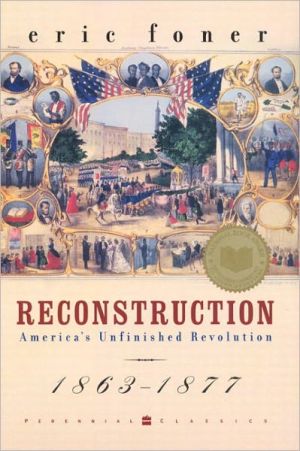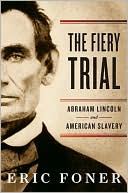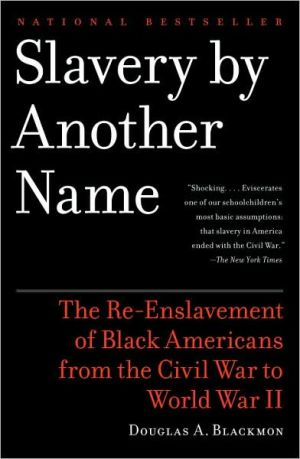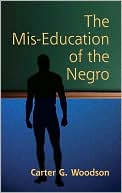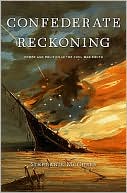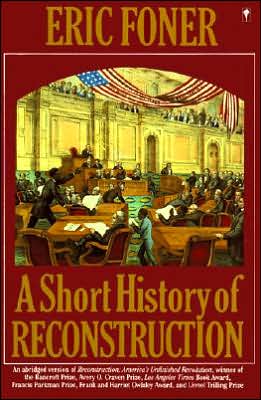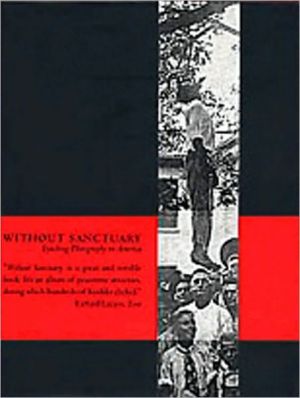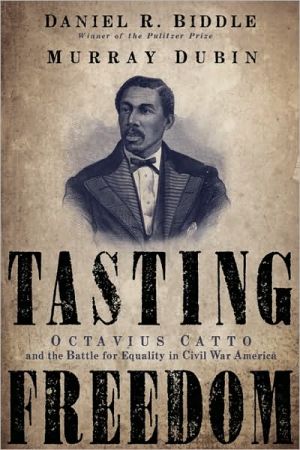Reconstruction: America's Unfinished Revolution, 1863-1877
This "masterful treatment of one of the most complex periods of American history" (New Republic) made history when it was originally published in 1988. It redefined how Reconstruction was viewed by historians and people everywhere in its chronicling of how Americans — black and white — responded to the unprecedented changes unleashed by the war and the end of slavery. This "smart book of enormous strengths" (Boston Globe) has since gone on to become the classic work on the wrenching...
Search in google:
This "masterful treatment of one of the most complex periods of American history" (New Republic) made history when it was originally published in 1988. It redefined how Reconstruction was viewed by historians and people everywhere in its chronicling of how Americans — black and white — responded to the unprecedented changes unleashed by the war and the end of slavery. This "smart book of enormous strengths" (Boston Globe) has since gone on to become the classic work on the wrenching post-Civil War period — an era whose legacy reverberates still today in the United States.
Chapter One\ \ \ The World the War Made\ \ \ The Coming of Emancipation\ \ \ 0n January 1, 1863, after a winter storm swept up the east coast of the United States, the sun rose in a cloudless sky over Washington, D.C. At the White House, Abraham Lincoln spent most of the day welcoming guests to the traditional New Year's reception. Finally, in the late afternoon, as he had pledged to do 100 days before, the President retired to his office to sign the Emancipation Proclamation. Excluded from its purview were the 450,000 slaves in Delaware, Kentucky, Maryland, and Missouri (border slave states that remained within the Union), 275,000 in Union-occupied Tennessee, and tens of thousands more in portions of Louisiana and Virginia under the control of federal armies. But, the Proclamation decreed, the remainder of the nation's slave population, well over 3 million men, women, and children, "are and henceforth shall be free."\ Throughout the North and the Union-occupied South, January 1 was a day of celebration. An immense gathering, including black and white abolitionist leaders, stood vigil at Boston's Tremont Temple, awaiting word that the Proclamation had been signed. It was nearly midnight when the news arrived; wild cheering followed, and a black preacher led the throng in singing "Sound the loud timbrel o'er Egypt's dark sea, Jehovah hath triumphed, his people are free." At a camp for fugitive slaves in the nation's capital, a black man "testified" about the sale, years before, of his daughter, exclaiming, "Now, no more dat!...Dey can't sell my wife and child any more,bless de Lord!" Farther south, at Beaufort, an enclave of federal control off the South Carolina coast, there were prayers and speeches and the freedmen sang "My Country 'Tis of Thee." To Charlotte Forten, a young black woman who had journeyed from her native Philadelphia to teach the former slaves, "it all seemed...like a brilliant dream." Even in areas exempted from the Proclamation, blacks celebrated, realizing that if slavery perished in Mississippi and South Carolina, it could hardly survive in Kentucky, Tennessee, and a few parishes of Louisiana.\ Nearly two and a half centuries had passed since twenty black men and women were landed in Virginia from a Dutch ship. From this tiny seed had grown the poisoned fruit of plantation slavery, which, in profound and contradictory ways, shaped the course of American development. Even as slavery mocked the ideals of a nation supposedly dedicated to liberty and equality, slave labor played an indispensable part in its rapid growth, expanding westward with the young republic, producing the cotton that fueled the early industrial revolution. In the South, slavery spawned a distinctive regional ruling class (an "aristocracy without nobility" one Southern-born writer called it) and powerfully shaped the economy, race relations, politics, religion, and the law. Its influence was pervasive: "Nothing escaped, nothing and no one." In the North, where slavery had been abolished during and after the American Revolution, emerged abolition, the greatest protest movement of the age. The slavery question divided the nation's churches, sundered political ties between the sections, and finally shattered the bonds of Union. On the principle of opposing the further expansion of slavery, a new political party rose to power in the 1850s, placing in the White House a son of the slave state Kentucky, who had grown to manhood on the free Illinois prairies and believed the United States could not endure forever half slave and half free. In the crisis that followed Lincoln's election, eleven slave states seceded from the Union, precipitating in 1861 the bloodiest war the Western Hemisphere has ever known.\ To those who had led the movement for abolition, and to slaves throughout the South, the Emancipation Proclamation not only culminated decades of struggle but evoked Christian visions of resurrection and redemption, of an era of unbounded progress for a nation purged at last of the sin of slavery. Even the staid editors of the New York Times believed it marked a watershed in American life, "an era in the history...of this country and the world." For emancipation meant more than the end of a labor system, more even than the uncompensated liquidation of the nation's largest concentration of private property ("the most stupendous act of sequestration in the history of Anglo-Saxon jurisprudence," as Charles and Mary Beard described it). The demise of slavery inevitably threw open the most basic questions of the polity, economy, and society. Begun to preserve the Union, the Civil War now portended a far-reaching transformation in Southern life and a redefinition of the place of blacks in American society and of the very meaning of freedom in the American republic.\ In one sense, however, the Proclamation only confirmed what was already happening on farms and plantations throughout the South. War, it has been said, is the midwife of revolution, and well before 1863 the disintegration of slavery had begun. Whatever politicians and military commanders might decree, slaves saw the war as heralding the longawaited end of bondage. Three years into the conflict, Gen. William T. Sherman encountered a black Georgian who summed up the slaves' understanding of the war from its outset: "He said...he had been looking for the 'angel of the Lord' ever since he was knee-high, and, though we professed to be fighting for the Union, he supposed that slavery was the cause, and that our success was to be his freedom." Based on this conviction, the slaves took actions that propelled a reluctant white America down the road to abolition.\ As the Union Army occupied territory on the periphery of the Confederacy, first in Virginia, then in Tennessee, Louisiana, and elsewhere, slaves by the thousands headed for the Union lines. Union enclaves like Fortress Monroe, Beaufort, and New Orleans became havens for runaway slaves and bases for expeditions into the interior that further disrupted the plantation regime. Even in the heart of the Confederacy...\ Reconstruction. Copyright © by Eric Foner. Reprinted by permission of HarperCollins Publishers, Inc. All rights reserved. Available now wherever books are sold.
Abbreviations Used in FootnotesxiiiEditors' IntroductionxvPrefacexvii1.The World the War Made1The Coming of Emancipation1The Inner Civil War11The North's Transformation182.Rehearsals for Reconstruction35Dilemmas of Wartime Reconstruction35Land and Labor During the Civil War50The Politics of Emancipation and the End of the War603.The Meaning of Freedom77From Slavery to Freedom78Building the Black Community88The Economics of Freedom102Origins of Black Politics110Violence and Everyday Life1194.Ambiguities of Free Labor124Masters Without Slaves128The "Misrepresented Bureau"142The Freedmen's Bureau, Land, and Labor153Beginnings of Economic Reconstruction1705.The Failure of Presidential Reconstruction176Andrew Johnson and Reconstruction176Launching the South's New Governments185The Anatomy of Presidential Reconstruction198The North's Response2166.The Making of Radical Reconstruction228The Radical Republicans228Origins of Civil Rights239The Fourteenth Amendment251The Campaign of 1866261The Coming of Black Suffrage2717.Blueprints for a Republican South281The Political Mobilization of the Black Community281The Republican Coalition291The North and Radical Reconstruction307The Constitutional Conventions316Impeachment and the Election of Grant3338.Reconstruction: Political and Economic346Party and Government in the Reconstruction South346Southern Republicans in Power364The Gospel of Prosperity379Patterns of Economic Change3929.The Challenge of Enforcement412The New Departure and the First Redemption412The Ku Klux Klan425"Power from Without"44410.The Reconstruction of the North460The North and the Age of Capital461The Transformation of Politics469The Rise of Liberalism488The Election of 187249911.The Politics of Depression512The Depression and Its Consequences512Retreat from Reconstruction524The Waning of Southern Republicanism535The Crisis of 187555312.Redemption and After564The Centennial Election564The Electoral Crisis and the End of Reconstruction575The Redeemers' New South587Epilogue: "The River Has Its Bend"602Acknowledgments613Selected Bibliography615Index643
